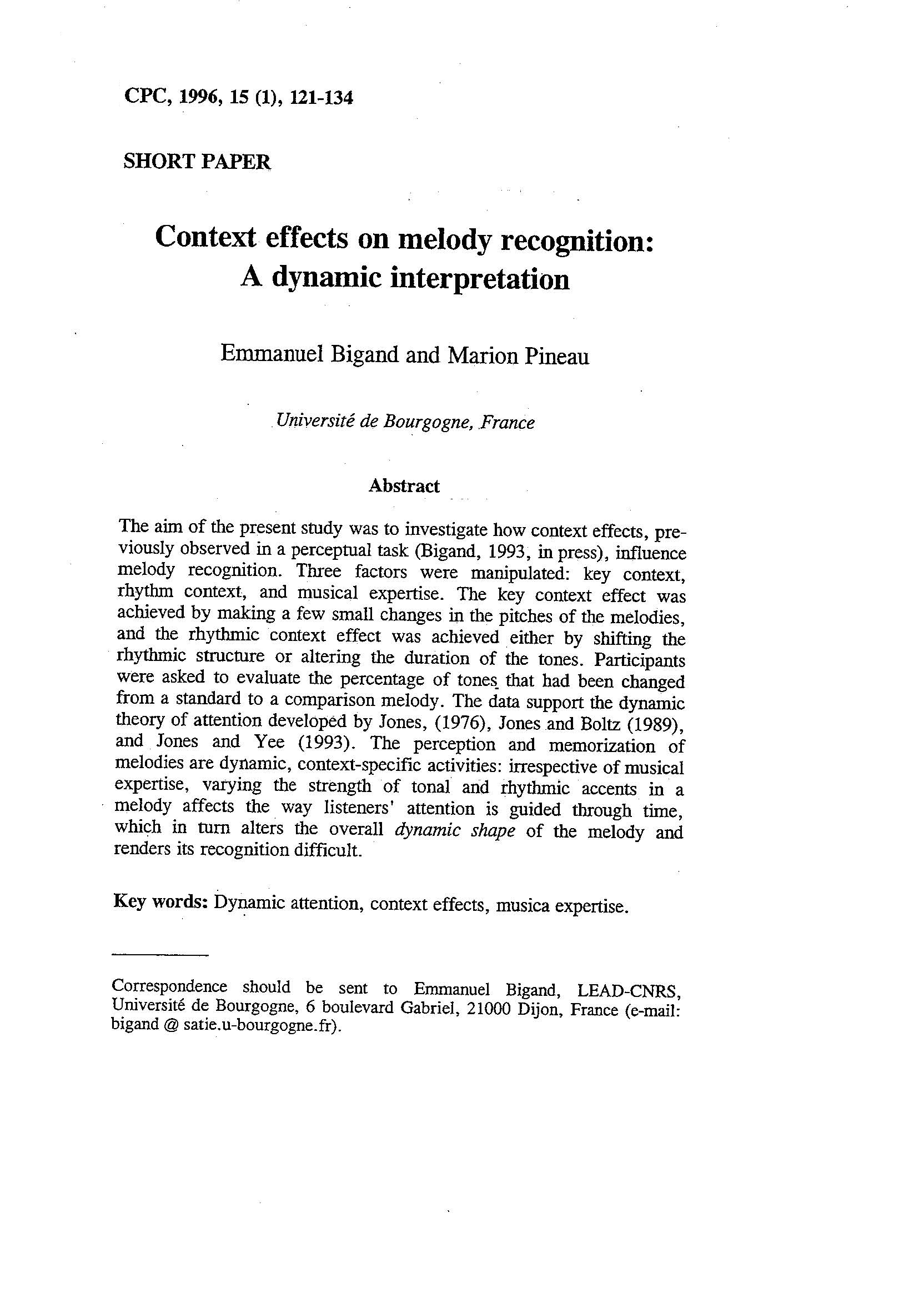The aim of the present study was to investigate how context effects, previously observed in a perceptual task (Bigand, 1993, in press), influence melody recognition. Three factors were manipulated: key context, rhythm context, and musical expertise. The key context effect was achieved by making a few small changes in the pitches of the melodies, and the rhythmic context effect was achieved either by shifting the rhythmic structure or altering the duration of the tones. Participants were asked to evaluate the percentage of tones that had been changed from a standard to a comparison melody. The data support the dynamic theory of attention developed by Jones, (1976), Jones and Boltz (1989), and Jones and Yee (1993). The perception and memorization of melodies are dynamic, context-specific activities: irrespective of musical expertise, varying the strength of tonal and rhythmic accents in a melody affects the way listeners’ attention is guided through time, which in turn alters the overall dynamic shape of the melody and renders its recognition difficult.
Context effects on melody recognition: A dynamic interpretation
